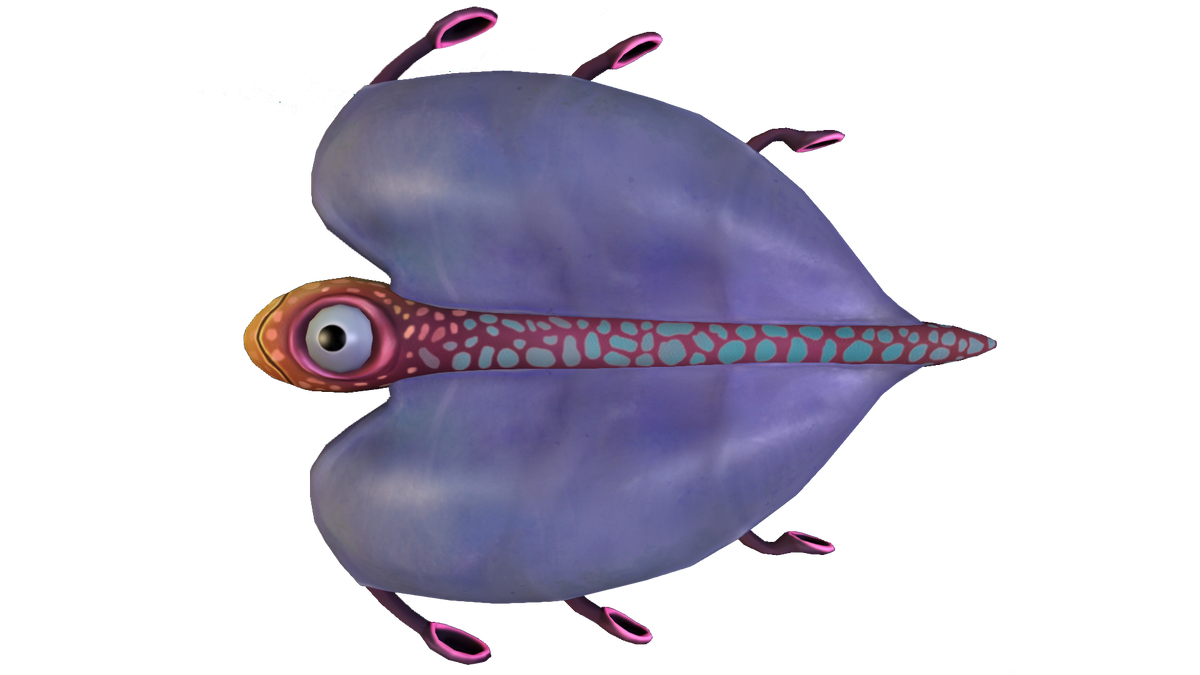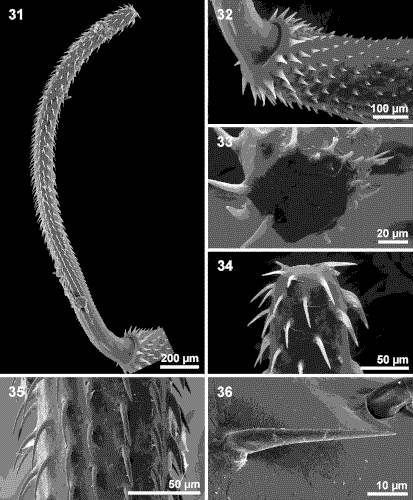
Hey look I'll draw it later ok, this looks pretty similar so imagine this but not a fish and in the air
A windbite is any member of a diverse and largely micropredatory group of soft-bodied, free-flying aerial invertebrates composing the order Gastroventus (coming from Greek gastḗr and Latin ventus, literally 'stomach wind'). The oldest recorded specimen in the fossil recorded is from the Late Arcanivian (180 million years ago) but could be much older due to the improbability of invertebrates successfully fossilizing. Windbites are native to Faerrum and are narrowly distributed and largely found in humid climates, but the greatest concentration of species diversity is in an enchanted tropical rainforest.
An adult windbite has a large bladder-like structure filled with a mixture of low-density helium and hydrogen, an appendage which contains the proboscis, as well as a bulbous growth in which the stomach, gastrointestinal tract, and the central nervous system is located.
Windbites are capable of light aeromancy, only employing magic in heliosynthesis.

Hey look I'll draw it later ok, this looks pretty similar so imagine this but not a fish and in the air
Like all member of the genus Gastroventus, windbites utilize a large bladder-like structure which houses gasses less denser than air to allow for aerial maneuverability.
The aerophore or wind bladder is the most conspicuous part of the windbite. This large, gas-filled, translucent structure is purple, pink or blue in color; the size of the bladder varies between species and varies from 5cm in length and 7cm in height for smaller species to 10cm in length and 30 cm in height for larger species. The aerophore functions as both a flotation device and a sail which allows the animal to move with the prevailing wind. The gas held within the aerophore is mostly hydrogen or helium, which is actively produced by the animal through a chemical process which utilizes magic. Directly connected to the aerophore are bronchial tracheas that when relaxed release the pressurized gas within the bladders to directly control the direction of movement.
hurr durr proboscis hurr durr the gut of the windbite occupies most of the big ball tumor. the proboscis opens through a short esophagus into an eversible digestive system. The stomach is supported by ligaments and muscles so the stomach can be pulled back into position (PLACEHOLDER TEXT)
Windbites feed exclusively on the flesh and tissue of its hosts; windbites are opportunistic and will feed on any available flesh and tissue regardless of size, but some species exclusively feed on large organisms such as billowpikes and hornfreaks.
Most windbites are crepuscular, feeding only at dawn or dusk, and rest in a dank and shaded spot away from sunlight during the day. Some species, such as the Lantern windbite, have been observed to be active during the day. Windbites use multiple clues to find their hosts; they are capable of detecting slight winds caused by the movement of large host animals. Additionally; they have chemoreceptors and thermoreceptors to detect the heat and odorants emitted and exhaled by the host animal. Windbites have no eyes; instead, they have primitive light-sensitive cells within their epidermis.
Windbites are ambush micropredators and perch up in concealed positions and remain stationary until a host is within the reach of its proboscis. Windbites have been observed to perch in forest canopies, low hanging branches, low elevation foliage, rock crevices, tall grass, and dark areas.
Windbites feed by rapidly contracting the muscles within their proboscis. The combination of high velocity and sharpness of the proboscis punctures the epidermis of the host and barbed hooks located laterally on the proboscis embeds itself deep within the hosts flesh. The windbite then secretes anesthetics and everts its digestive system through its proboscis to begin digesting the host's flesh and tissue live. The proboscis serves as an anchor to the host as a windbite feeds. For a windbite to continue to feed on the host, it must circumvent its host's physiological responses. Windbite saliva contains anesthetics and immunosuppressants, which let the windbite feed undisturbed. When a windbite has finished feeding either when they are forcibly removed from the host or they near a critical mass where they are no longer able to fly, they detach their proboscis from the host by severing it completely and utilizes its aerophores to retreat into a suitable location to begin digestion where it will also regenerate its lost proboscis.

A scanning electron microscopy of a windbite's proboscis (placeholder image lol)
Windbites possess the Arcane Affinity Genesis (AAG) gene and are thus able to encode the Arcane Affinity Ribonucleic Kinesis (AARK) protein, enabling it to utilize magic. Windbites use magic in heliosynthesis to produce helium gas.
Windbites utilize magic by anomalously adding a proton to a hydrogen atom, turning it into helium, which then forms into helium gas. This process is used to saturate the aerophore with hydrogen and helium gas which allows the animal to float in the air. This process is extremely energy expensive and the animal can spend several days producing enough of the hydrogen-helium gas mixture to saturate its aerophores.
Go back to main page